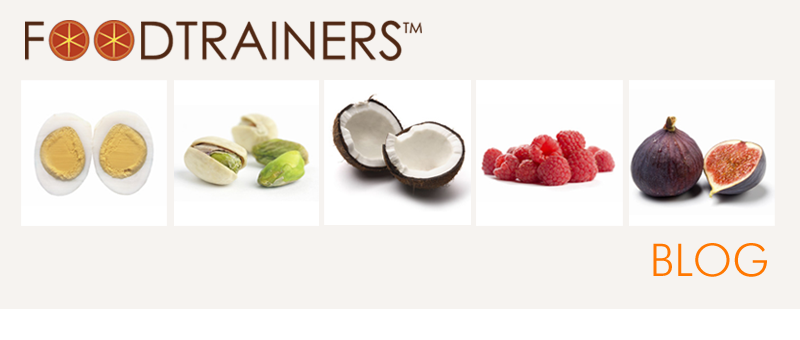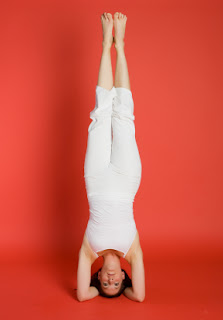For today's post I asked Melissa (@MarketMelissa) to talk meat substitutes. Melissa conducts our Market Foodtraining tours on various topics including "Vegetarian Foodtraining."
While I am not a vegetarian, I do believe there are major issues with the meat supply in this country. In my perfect world we would all be eating only organic chicken, wild fish and an occasional serving of grass-fed beef. I also think we could benefit from including more vegetarian meals in our diets. Research has shown vegetarians tend to have lower risks of heart disease, obesity, cancer and Type 2 Diabetes than meat eaters. What has me stumped is the rampant use of meat substitutes by many non-meat eaters. It strikes me as strange that those not eating meat seek out things that are meat-like, but that isn’t the focus of this post.
In case you’re unfamiliar with them (lucky you), meat substitutes AKA “faux meats” are foods that aren’t meat, but aim to aesthetically resemble meat in texture, flavor and appearance. They provide vegetarians with something meat like and a good dose of protein. For years, many cultures have used seitan (wheat gluten), tofu, legumes and tempeh in place of meat in vegetarian diets. These foods are fine. What I am not ok with are the recent wannabe meats that are inexpensive products made from processed soy, cottonseeds, wheat and oats, better known as textured vegetable protein (TVP). Other processed forms of soy are also being used. You will see them on food labels as soy protein isolate, and soy protein concentrate. You can find these ingredients in Boca’s Original Meatless Chik’n nuggets, Morningstar Farms Meal Starters, Boca’s Italian Meatless Sausage, Amy’s Quarter Pound Veggie Burger and many more. Make sure to read your ingredient lists.
My issues with too much of this processed soy are: 91% of soy grown in this country is genetically modified – meaning it is chemically manipulated and loaded with pesticides. Most processed soy is industrially produced using hexane, which may lead to damage of the nervous system if consumed in very large quantities (organic brands, such as Amy’s uses hexane free TVP). Soy contains estrogen-like compounds called phytoestrogens. Doesn’t it seem logical that mangling hormones may pose a problem? And it does, there is evidence that processed soy forms can interfere with thyroid function, cause infertility, disrupt menstrual function and increase risk of breast cancer. While these risks are potentially from consumption of large quantities of these items, it still makes me nervous.
I cringed a bit when I saw the segment on Oprah with Kathy Freston filling her shopping cart with faux meats. Aside from the issues I mentioned these products contain a sizable amount of sodium. Four Morning Star Farms Chik’n nuggets serves up 600mg of sodium and four ounces of Boca’s crumbles contains 540mg of sodium. What concerns me the most, however, are the ingredient lists. I spend my day encouraging clients to eat whole foods and scrutinizing food labels before putting them in their carts. I therefore cannot in good conscience recommend something that looks like this:
Ingredients: (Morning Star Farms Chik’n Nuggets)
TEXTURED VEGETABLE PROTEIN (SOY PROTEIN CONCENTRATE, SOY PROTEIN ISOLATE, WHEAT GLUTEN, WATER FOR HYDRATION), WATER, ENRICHED WHEAT FLOUR (FLOUR, NIACIN, REDUCED IRON, THIAMIN MONONITRATE, RIBOFLAVIN, FOLIC ACID), BLEACHED WHEAT FLOUR, CORN OIL, CORNSTARCH, CONTAINS TWO PERCENT OR LESS OF WHEAT STARCH, SALT, METHYLCELLULOSE, MODIFIED CORN STARCH, DEXTROSE, AUTOLYZED YEAST EXTRACT, POTASSIUM CHLORIDE, NATURAL AND ARTIFICIAL FLAVORS FROM NON-MEAT SOURCES, SUGAR, MALTODEXTRIN, DISODIUM INOSINATE, SOYBEAN OIL, HYDROLYZED SOY PROTEIN, ONION, PAPRIKA, DRIED YEAST, INULIN FROM CHICORY ROOT, CARAMEL COLOR, TAPIOCA DEXTRIN, XANTHAN GUM, SODIUM ALGINATE, SPICES, YELLOW CORN FLOUR, PAPRIKA EXTRACT FOR COLOR, ANNATTO EXTRACT FOR COLOR, BAKING SODA, GARLIC, TOMATO POWDER, CELERY EXTRACT, WHEAT FIBER, LACTIC ACID, SAFFLOWER OIL, BARLEY EXTRACT, CITRIC ACID, NIACINAMIDE, EGG WHITES, NONFAT DRY MILK, SUCCINIC ACID, DISODIUM GUANYLATE, IRON (FERROUS SULFATE), THIAMIN MONONITRATE (VITAMIN B1), PYRIDOXINE HYDROCHLORIDE (VITAMIN B6), RIBOFLAVIN (VITAMIN B2), VITAMIN B12.
How is this extensive list of unpronounceable ingredients healthier than eating meat? Or, how is it even remotely healthy?
So what would I recommend? The food industry has made quite a market out of these faux meats and sausage, ground meat, chicken, burgers and meatballs are available in meatless versions. There are certainly better companies than others out there. Field Roast Grain Meat Co. doesn’t use any processed soy and their ingredient list is far superior to the others.
If you want to enjoy some meatless meals, I say go back to the basics. Try tofu, seitan, and tempeh. These natural sources of soy can be great options and take on the flavor of your sauce, which can keep things interesting. Just make sure you look for non-GMO varieties (for soybeans too). Organic brands won’t use GM soy. Utilize beans, legumes, and grains naturally high in protein such as quinoa - all natural sources of protein and fiber. The bottom line is you don’t need to incorporate processed meat substitutes into your diet if you choose to go vegetarian. Fill your plate with “real food” veggie options, something that can benefit all of us.
Do a pantry check; did you find anything you wouldn’t expect with TVP, soy isolates or soy protein concentrate? Do you eat soy? What types? Do you think it’s strange that people who have meat-less diets want things meat-like? Is this like non-alcoholic beer?















